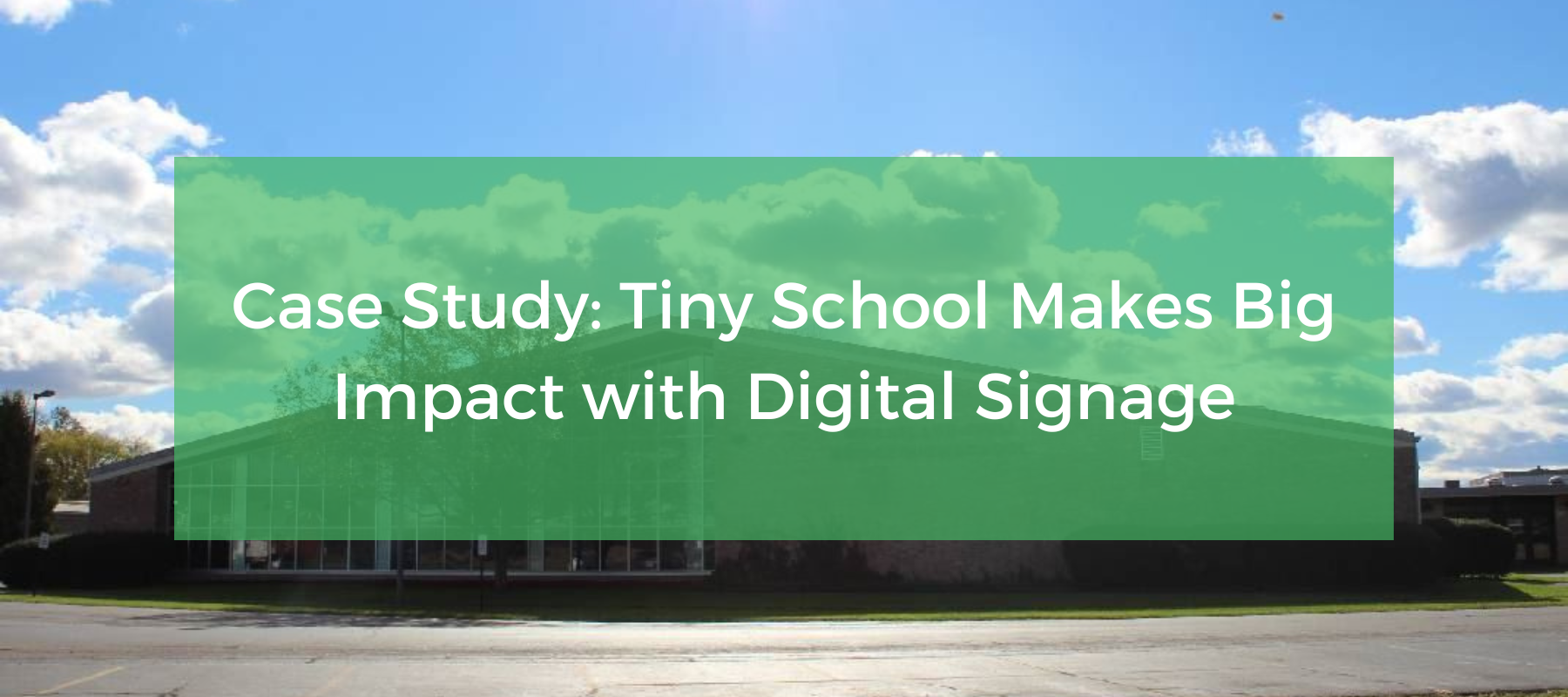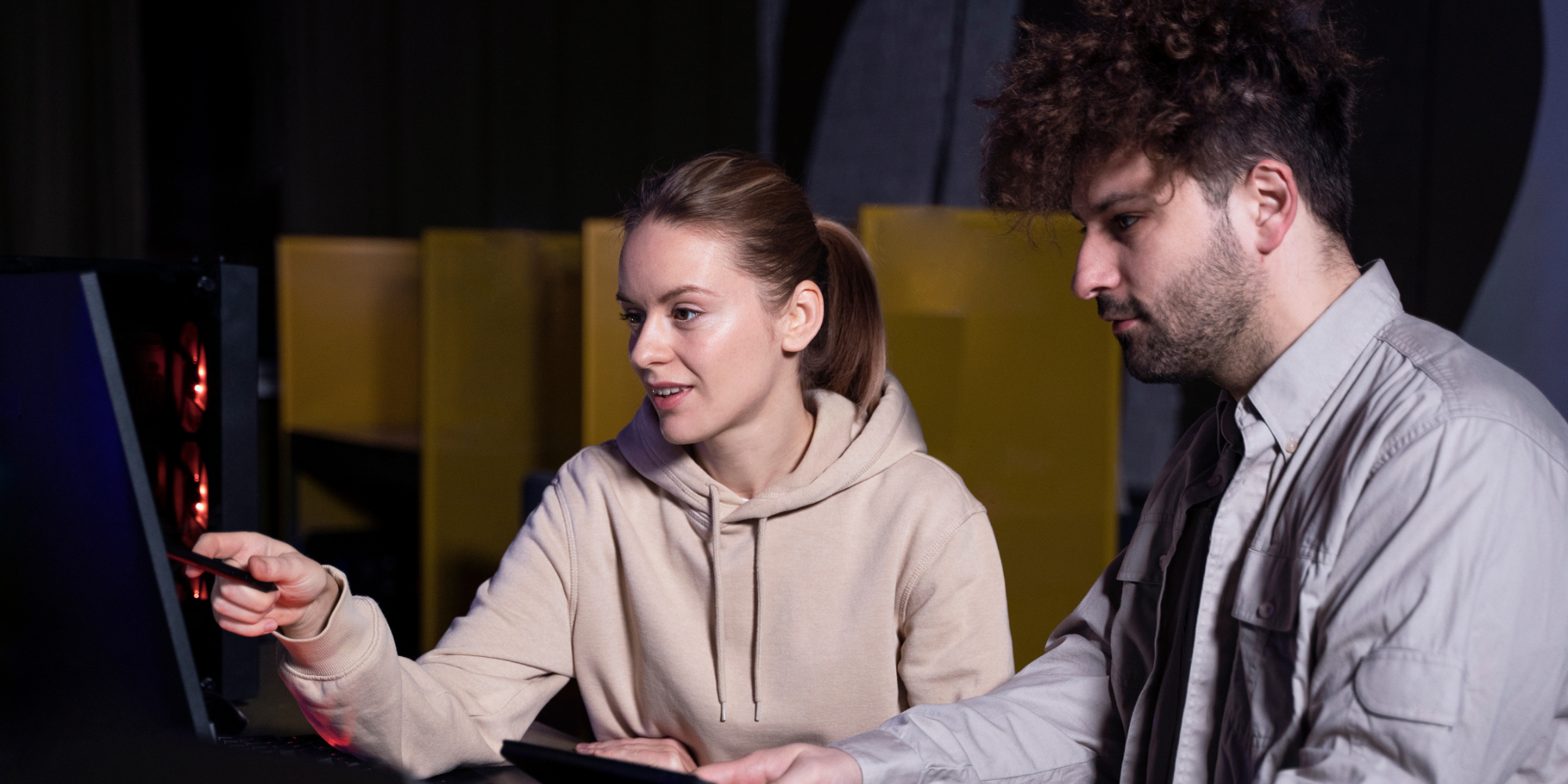
Wheatland-Chili is a tiny school district located in Scottsville, New York. This suburban agricultural community is home to one of the oldest Historic Districts in the nation and is called home to around 2,000 residents.
The two schools within the Wheatland-Child District are T.J. Connor Elementary School and Wheatland-Chili Middle/High School. Both schools have around 350 students, for a grand total of 700 students making up the student body of the Wheatland-Chili school district.
Despite its small size, Wheatland-Chili Middle/High School is making a big impact with its strategic use of digital signage displays within the school.
Donna Hartley, the Counseling Office Secretary, spoke to Rise Vision about how she is using digital signage to communicate daily announcements and more with the students.
Meet Donna Hartley, the Information Champion of Wheatland-Chili Middle/High School

Donna Hartley is a pillar in her community with her work at the school, but also with her involvement in community groups and organizations. So when it came time to take over daily announcements, the task fell on her desk.
The Problem Wheatland-Chili Wanted to Solve: Communicate with Students
At the end of 2022, the Wheatland-Chili school district requested that the school start using digital signage. This directive didn’t come with any insight on how to implement digital displays in their school though.

Why did Wheatland-Chili Start Using Rise Vision?
Initially, Donna explored implementing digital signage through PowerPoint but quickly realized that this system wouldn’t work for the school. She ran into the following problems using PowerPoint:
- The presentation would only play one time and wouldn’t continue to cycle through.
- There were usability issues getting the presentations to run on other computers.
- Updating the presentations onto all devices was going to be time-consuming since there wasn’t an easy method to remotely project the presentations from her desk to all of the classrooms in the school.
After escalating the issue to her IT director and getting buy-in from the district, Rise Vision was implemented. Within less than two weeks, Donna had put together an information-packed slide deck that pulled together engaging display elements, her school’s colors, and all the most important information students needed.
"I was worried that there would be a long learning curve when I first started using Rise Vision but was surprised at how quickly I was creating content slides and using the templates. Being able to modify templates by changing pictures, backgrounds, and color schemes makes each announcement 'pop' visually." - Donna Hartley
Wheatland-Chili Middle/High School is a “weather bug school”. The local news station has a weather monitor on the roof of the building and they use a small monitor to display the weather conditions 24/7. However, they quickly realized that while they had easy-to-use and affordable software, the school's existing 13-inch monitor wouldn’t cut it.

Now, they have four dedicated 42-inch displays throughout the school: one in the cafeteria, one in the counseling office where Donna works, one in the library, and one to welcome students and guests in the main foyer.
As well as these dedicated monitors, the school also displays its Rise Vision presentations on all the classroom's Recordex monitors. Students start their day by viewing the daily announcements in the hallways and in their classrooms.
Like Many Schools, Wheatland-Chili Middle/High has Lots of Information They Need to Communicate
Like a lot of schools, Wheatland-Chili Middle/High has a lot of information that they need to communicate to students and their families. Things like daily announcements, club and event updates, sporting event schedules, and information about scholarships or guest speakers. The school often has guest speakers from the US military come by.

Having the announcements read over the intercom and additional information on their website just wasn’t enough to get everything pertinent to their student body.
Before joining Rise Vision, Donna had students read excerpts from the daily announcement script. The balance of the information was updated on the school’s website.
This system wasn’t bad by any means. But students had to go out and search for information instead of seeing it scroll by on the displays as they got ready for classes.
How Wheatland-Chili Middle/High School Using Rise Vision to Solve Their Communication Issues
Using Rise Vision on a digital platform has made it easier, quicker, and more effective to communicate with their students.

With the easy-to-use system, Donna is able to hit publish on a new presentation within an hour of it landing on her desk. The quick turnaround time means that if a student or staff member has a last-minute announcement they want to share, they can drop it off on Donna’s desk at 7 a.m. and it can be live by 7:35 a.m. - right in time for morning announcements.
Rise Vision has over 500 templates to choose from but Donna finds herself flexing her creative muscles and using the tried and true PowerPoint platform to create her own designs when the template library doesn’t have exactly what she’s looking for.
There are three main ways that Wheatland-Chili is using Rise Vision to solve its communication problem:
- Communicating in bite-size pieces.
- Mimicking platforms that students love to use.
- Sharing information that students care about and want to read.
Short Form Information is Perfect for Short Attention Spans
Now, important information is circulated on their digital displays. If additional information is required or a topic needs to be expanded on for more than what can be supported on the display, it’s posted on the website.

Having bite-sized bits of information on their displays is perfect for students. The average human attention span is just 8.25 seconds after all. Having long-form information on the website makes it easy for a student or families to find the information they need.
Students aren’t left out of the process though. Donna still has a student make verbal announcements one or two days a week.
Digital Signage is like Social Media for Communicating with Students
Another reason that having information scroll on a digital display is also a great way to communicate with students, is because middle and high school students are digital natives.
Presentations in a digital signage option like Rise Vision is a unique way to clearly communicate with students. For this generation, a top social media platform is TikTok, according to a survey by the Pew Research Center. TikTok is a social media app that allows users to create, watch, and share 15-second videos.
The survey found that the four top social media platforms were YouTube, TikTok, Instagram, and Snapchat. What do these platforms have in common with digital signage? Short, snappy displays that a user can consume and then move on to the next thing.
Donna from Wheatland-Chili has tapped into understanding this way to communicate with her student body through digital signage - and received lots of positive feedback.
Share the Information Students Care About
With the bombardment of information available now, Donna ensures that the presentations on the displays are the information that students care most about.
Students at Wheatland-Chili love seeing their favorite local sports teams' scores and stats. So to keep them cheering for their team, the school has a free subscription to ScoreStream.
Digital signage has also been used to elevate two important school clubs: Students Together Against Racism (STAR) and the Gay Straight Alliance. To support these two clubs, Donna ensures that presentations and upcoming events about the clubs are posted.
Another favorite display type is highlighting students and their accomplishments in the presentations. Students love to see themselves up on the displays when they are recognized for an achievement or spotlight.
Is There a Risk of Digital Burnout?
With the rise of internet use and digital screens everywhere, Wheatland-Chili isn’t naive to the risk of digital burnout. The same study from Pew Research Center found that there has been an uptick in daily teen internet users from 92% in 2014 to 97% today.

Wheatland-Chili schools are fortunate to be very tech-forward which Donna credits to being a very small district.
During Covid-19, when other schools were making a mad dash to have 1:1 computing, Wheatland-Chili already had their system in place.
One-to-One (often abbreviated to 1:1) technology is a situation where every student has their own computer (typically a tablet, laptop, Chromebook, etc.) to use for learning. In the case of Wheatland-Chili, their 1:1 program equips their pre-K to grade 3 students with an iPad, while the older kids have a laptop.
With this system in place, Wheatland-Chili schools were able to adapt to the pandemic remote learning environment quickly. They were also able to get students back in school sooner because they have a smaller student body.
Now, students enjoy a mix of online learning and good old fashion learning with paper.
What Can You Learn from Wheatland-Chili Middle/High School?
On top of everything else in an educator’s day, squeezing in time to effectively communicate with students can be too much. Instead of pushing updates to the school’s website every day and potentially having students miss important announcements, Wheatland-Chili Middle/High School has found a way to communicate with students.
Using digital signage has lent a communication method that works for this technology-bound generation that prefers short, concise messaging. Fun and eye-catching displays catch their eye and they can quickly absorb the information they need before the slide (and their attention span) moves on to the next display.
It’s great to see a school lean into what works for students and find resources to communicate on their level.





